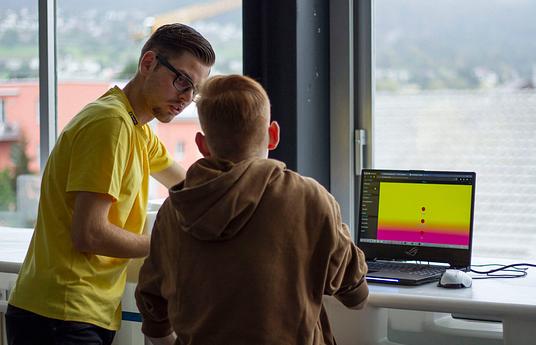Marginalization and school drop-outs pose a serious challenge to youth and their effects can ripple throughout their lives as they grow up. This is why schools should have the tools to ensure that no child is left behind and prevent youth exclusion.
Young people at risk of exclusion need personalized learning methods and schools don't always meet this need. We need new ways to make schools meaningful and appealing.
The NEST model allows young people to study at their own pace which in turn helps them find study motivation. The model is built on the idea that schools should mold to the students' needs, not the other way around.
NEST stands for: needs, education, strength, taking care.
The students who are chosen for NEST form a group of 10–12. They are led by a teacher and a instructor experienced in youth growth and development. The model was developed at Sipoonlahti comprehensive school where the group's instructor is a trained psychiatric nurse.
The model supports especially those students who have multiple absences due to an illness, traveling or another reason that makes learning more difficult. Often this may be anxiety that is manifested as difficulties concentrating on studying in a large class.
Students can attend NEST either part-time or full-time. The teacher instructs the full-time students in all humanities and natural sciences collaborating with the subject teachers. They aim to form larger modules out of subjects so the learning content is enjoyable for the students. The students should preferably study art and physical education and optional subjects together in a large group.
NEST has also been open to all students who have wanted to learn calmly in a quiet, small group.
Students are able to apply to NEST and request the type of support they require in their studies. The school asks the students what they need to feel better at school, reach better learning results and, above all, to participate in school. They interview each student and contact their parents.
After launching NEST in the fall of 2016, every student at Sipoonlahti has re-committed to school and school drop-outs have practically disappeared.
The NEST principles:
- Dismantling roadblocks to learning. Multiprofessional collaboration is becoming a part of everyday school activities, as well.
- Learning at one's own pace. The learning contents are packaged as modules that the students can work on at their own pace in different environments. If the students are unable to study at school, they can do the exercises at home or hospital schools, for example.
- Documenting the studies fastidiously. You should record the student's progress somewhere you can all track with ease, because the actual studying is independent.



